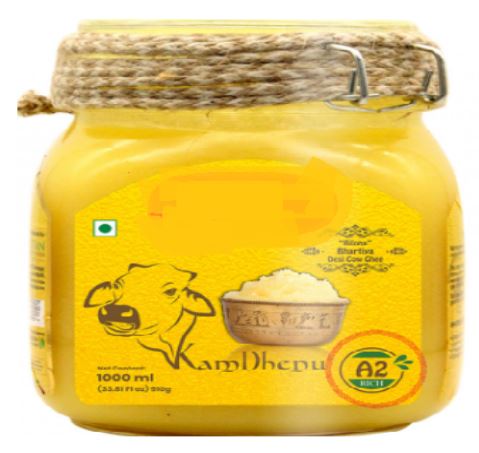Ghee has been considered as one of the most valuable milk products that is a part of Indian cooking for several decades. The food trends are changing post the onset of COVID and people are making healthier choices with regard to the food they consume. In recent times, A2 cow milk and ghee has been trending in the market.
Cow ghee is a carrier of fat-soluble vitamins including A, D, E and K, which our bodies need in very small quantities but can’t make for itself. These Vitamins perform many essential functions. Similarly, the essential fatty acids,which cannot be synthesized in our body, are also supplied by ghee.
We all know that milk is a good source of protein, and A2 is also a type of protein. Claiming a product as A2 milk is acceptable provided the milk is produced by desi cows that contain A2A2 gene dominant over the other. But branding a ghee as “A2 Ghee” is misleading as all the proteins in ghee are denatured due to the heat involved in the processing and fat is all that is left in ghee.
What is A2 milk and how is it different ?
Cow’s milk is a good source of two major types of proteins which are casein and whey protein. The Casein protein is of various types like alpha (α) casein, Beta (β) casein and Kappa (κ) casein, of which the most abundantly seen is β casein protein that exists in A1 and A2 form.
The regular milk that most of us consume contains both A1 and A2 proteins, but A2 milk is the milk that comes from cows that only produce A2 beta – casein. Cow’s milk β-casein contains 209 amino acids. The structure of both A1 and A2 proteins are nearly identical, but the only difference structures of the two beta-casein is in the position of amino acid 67, which is histidine in A1 or proline in A2 milk.
A2 protein is produced by the milk from the indigenous cows and buffaloes.India’s desi cow breeds like Tharparkar, Gir, and Sahiwal, Red Sindhi have a genetic make-up that yields milk high in A2. These desi breeds have one gene dominant over the other, which causes production of A2 milk.
Few studies showed that A1 β-casein produces a bioactive peptide named Beta Casomorphin 7 (BCM7), which has the ability to alter gastrointestinal function. However debate about the potential health effects of A1 and A2 milk is still ongoing and there is lack of clinical data to prove that A2 milk is beneficial over A1. In India, most of the native cows produce A2 milk which is very much safe for consumption.
FSSAI does not have any differentiation in the standards of milk that is specific for A1 and A2 types. While it is mandatory to mention the class of milk based on the source, fat and SNF percentage, there is no regulatory requirement to mention the type of protein present in milk on the milk packages.
Preparation Methods of Ghee
The normal cow or buffalo ghee that we buy from supermarkets are made by mechanically churning raw milk at high speed to separate butter out of it. This butter is used for ghee preparation.
It is different from Desi ghee manufacturing, which is called the Bilona Process.The traditional method of preparing ghee involves boiling of the cow milk and allowing it to cool down in earthen pots and a curd starter is added to convert the milk into curd.The curd is churned in wooden pots with a wooden churner or a “Bilona” to get butter. This butter is melted to obtain Desi ghee.
Why is Desi Ghee Priced High?
Desi Ghee available in the market is priced higher than the industrially produced Ghee. The high pricing of Desi ghee is not because it is made from milk rich in A2 protein, as we know that protein has no role to play in any type of ghee. There are few reasons why Desi ghee is priced higher, one is that Desi cows produce less milk compared to crossbred cows and Desi ghee preparation requires more milk compared to ordinary ghee. About 25 to 30 liters of milk is required to obtain 1 liter of hand churned ghee, whereas industrial preparation of 1 liter ghee requires approximately 15 liters of cow or buffalo milk. As more milk is used in Desi ghee, more creamier and nutritious than the industrially processed ghee.The byproduct of industrially produced ghee is sold as skimmed milk, whereas in the case of desi ghee, buttermilk is left as a byproduct and marketing it on a large scale will not be as profitable as generating income from skimmed milk.
Even though ghee from Desi cow milk has many benefits, marketing a product which is 100% fat as “A2” ghee or “A2 Rich Ghee” is misleading. It is high time for the manufacturers to be honest with their consumers. There is nothing wrong in claiming that the ghee is made out of A2 milk , but the labels shouldn’t indicate that the ghee itself has A2 protein.
Meera V. is a Food Technologist and goes to quite an extent to tell the food businesses what they can do to improve the food safety and hygiene. She is a Senior Associate Consultant at Food Safety Works and regularly audits food businesses to check on their compliance and also plays a crucial role in the regulatory and compliance team.


